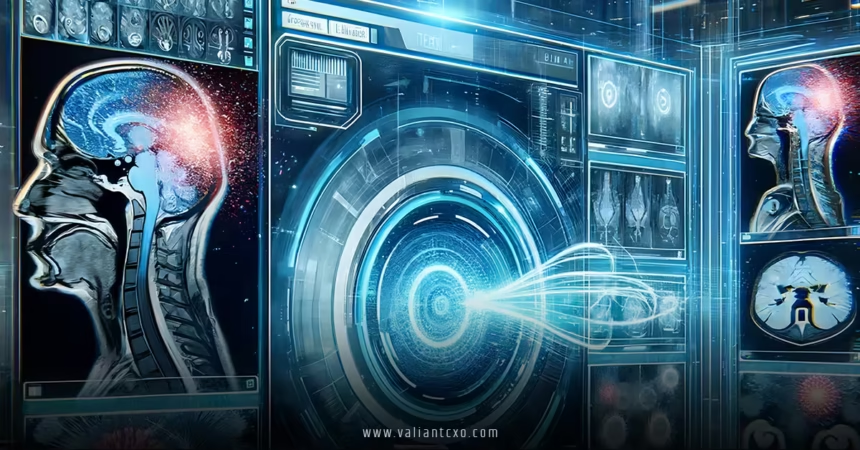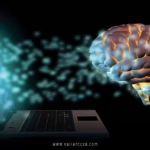Ethical AI at the Crossroads: Balancing Innovation with Responsibility is more than just a catchy phrase—it’s a call to action. As artificial intelligence reshapes industries, societies, and even our daily lives, we stand at a pivotal moment. Do we charge full speed into innovation, or do we pause to ensure AI serves humanity responsibly? This article dives deep into the heart of this dilemma, exploring how we can harness AI’s potential while keeping ethics front and center. Let’s unpack this complex issue with a conversational lens, weaving together insights, analogies, and a touch of curiosity.
What Does Ethical AI at the Crossroads Mean?
Picture AI as a shiny new car speeding down a highway. Innovation is the gas pedal, pushing us toward uncharted destinations—faster diagnoses, smarter cities, and personalized experiences. But responsibility? That’s the steering wheel, keeping us from veering off into chaos. Ethical AI at the Crossroads: Balancing Innovation with Responsibility captures this tension. It’s about making sure AI’s incredible power doesn’t outpace our ability to control it.
The “crossroads” isn’t just poetic flair. It’s where we decide whether AI becomes a tool for good or a Pandora’s box of unintended consequences. From biased algorithms to privacy invasions, the risks are real. Yet, the opportunities—like curing diseases or tackling climate change—are too massive to ignore. So, how do we strike the balance?
Why Ethics in AI Matters Now More Than Ever
AI isn’t some distant sci-fi concept anymore. It’s here, woven into our lives. Think about it: AI decides what shows you binge, what ads you see, and even who gets hired for a job. But here’s the kicker—what happens when AI makes decisions based on flawed data? Or when it’s designed without diverse perspectives? You get outcomes that amplify inequality or erode trust.
Ethical AI at the Crossroads: Balancing Innovation with Responsibility demands we address these issues head-on. According to a 2023 Pew Research study, 60% of Americans worry about AI’s societal impact. That’s not just a statistic—it’s a wake-up call. We need systems that prioritize fairness, transparency, and accountability, not just efficiency.
The Innovation Side: Why AI’s Potential Is Mind-Blowing
Let’s take a moment to marvel at what AI can do. It’s like giving humanity a superpower. AI is already transforming healthcare by predicting diseases before symptoms appear. In education, it’s personalizing learning for kids who might otherwise fall through the cracks. And in business? AI’s crunching data faster than any human could, helping companies make smarter decisions.
But here’s where Ethical AI at the Crossroads: Balancing Innovation with Responsibility comes into play. Innovation without guardrails can lead to trouble. Take self-driving cars. They promise safer roads, but what happens when an algorithm has to choose between two bad outcomes in a split second? That’s where ethics steps in, ensuring innovation doesn’t outstrip our moral compass.
Real-World Examples of AI Innovation
- Healthcare: AI tools like Google’s DeepMind can analyze medical images with accuracy rivaling top doctors. This could save millions of lives by catching diseases early.
- Environment: AI models are optimizing renewable energy grids, cutting waste, and helping fight climate change. For instance, IBM’s AI-driven weather forecasting is making renewable energy more reliable.
- Education: Platforms like Duolingo use AI to tailor lessons to individual learners, making education accessible worldwide.
These breakthroughs are exciting, but they’re only half the story. Without ethical oversight, even the best intentions can go awry.
The Responsibility Side: Guarding Against AI’s Dark Side
If innovation is the spark, responsibility is the fire extinguisher. Ethical AI at the Crossroads: Balancing Innovation with Responsibility means acknowledging AI’s risks and taking steps to mitigate them. Let’s break down the big ones.
Bias and Fairness: The Hidden Traps
AI isn’t inherently neutral. It’s built by humans, and humans have biases. If a hiring algorithm is trained on data from a company with a history of gender imbalance, guess what? It’ll likely favor men. A 2018 study by Amazon (now discontinued) showed their AI recruitment tool downgraded resumes with female-associated terms. That’s not innovation—it’s discrimination dressed up as tech.
Addressing bias requires diverse teams building AI, transparent data sources, and constant auditing. It’s not easy, but it’s non-negotiable if we want AI to serve everyone fairly.
Privacy: The Cost of Convenience
Ever wonder how your phone seems to know what you’re thinking? AI’s great at personalizing experiences, but it often comes at the expense of your data. Ethical AI at the Crossroads: Balancing Innovation with Responsibility means prioritizing user privacy. Regulations like the EU’s GDPR set a high bar, requiring companies to be transparent about data use. But globally, we’re still playing catch-up.
Accountability: Who’s to Blame When AI Fails?
Here’s a tough one: if an AI system makes a mistake—like misdiagnosing a patient—who takes the fall? The developer? The company? Nobody? Ethical AI demands clear accountability. We need frameworks that hold creators responsible while fostering trust in the technology.
Striking the Balance: Practical Steps for Ethical AI
So, how do we navigate this crossroads? Ethical AI at the Crossroads: Balancing Innovation with Responsibility isn’t just a buzzword—it’s a roadmap. Here are practical ways to ensure AI stays on the right path.
1. Build Diverse Teams
AI reflects the people who create it. If those people all look the same, think the same, or come from similar backgrounds, you’re asking for blind spots. Diverse teams bring varied perspectives, catching biases before they become problems.
2. Prioritize Transparency
Nobody trusts a black box. If users can’t understand how an AI makes decisions, they won’t trust it. Companies should adopt explainable AI, where systems provide clear reasoning for their outputs. It’s like showing your work in math class—proof builds confidence.
3. Enforce Ethical Guidelines
Governments and organizations need to step up. Frameworks like the EU’s AI Act or UNESCO’s AI Ethics principles are a start. These guidelines set standards for fairness, accountability, and transparency, ensuring AI serves the public good.
4. Engage the Public
Ethical AI at the Crossroads: Balancing Innovation with Responsibility isn’t just for techies—it’s for everyone. Public input ensures AI reflects societal values. Imagine AI as a public park: it’s only valuable if everyone feels safe using it.
5. Invest in Education
We need more than just coders. Ethical AI requires ethicists, sociologists, and policymakers working together. Universities and companies should invest in interdisciplinary programs to train the next generation of AI leaders.
The Role of Regulation in Ethical AI
Regulation often gets a bad rap as a creativity killer, but in AI, it’s a lifeline. Ethical AI at the Crossroads: Balancing Innovation with Responsibility hinges on smart policies that protect without stifling. The EU’s AI Act, for example, categorizes AI systems by risk level, imposing stricter rules on high-risk applications like facial recognition. It’s not perfect, but it’s a step toward accountability.
On the flip side, overregulation could choke innovation. Small startups can’t always afford the compliance costs that tech giants can. The trick is finding a sweet spot—rules that protect without punishing creativity.
The Human Element: Why We Can’t Outsource Ethics
At its core, Ethical AI at the Crossroads: Balancing Innovation with Responsibility is about people. AI isn’t some autonomous overlord; it’s a tool we design, deploy, and oversee. That means the responsibility lies with us—developers, policymakers, and even users.
Think of AI like a kitchen knife. It’s incredibly useful, but in the wrong hands, it’s dangerous. Our job is to wield it wisely, ensuring it cuts through problems without causing harm. That starts with asking tough questions: Who benefits from this AI? Who might get hurt? Are we moving too fast?
Looking Ahead: The Future of Ethical AI
The future of AI is both thrilling and daunting. By 2030, AI could contribute $15.7 trillion to the global economy, according to PwC. But without ethical guardrails, that growth could come at a steep cost—widening inequality, eroding privacy, or worse. Ethical AI at the Crossroads: Balancing Innovation with Responsibility is our chance to shape a future where AI amplifies human potential, not human flaws.
Imagine a world where AI helps doctors save lives without bias, where it powers smart cities without spying on citizens, where it educates kids without leaving anyone behind. That’s the promise of ethical AI—but it’s up to us to make it real.
Conclusion: Choosing the Right Path
Ethical AI at the Crossroads: Balancing Innovation with Responsibility isn’t just a topic—it’s a mission. AI’s potential is limitless, but so are its risks. By prioritizing fairness, transparency, and accountability, we can harness AI’s power while staying true to our values. It’s not about slowing down innovation; it’s about steering it toward a future that benefits everyone. So, let’s take the high road, ask the tough questions, and build an AI that makes us proud. The crossroads is here—where will we go?
FAQs
1. What does Ethical AI at the Crossroads: Balancing Innovation with Responsibility mean?
It refers to the critical point where we must balance AI’s rapid advancements with ethical considerations like fairness, privacy, and accountability to ensure it benefits society without causing harm.
2. Why is ethical AI so important today?
As AI becomes more integrated into daily life—from hiring to healthcare—Ethical AI at the Crossroads: Balancing Innovation with Responsibility ensures it doesn’t amplify biases or erode trust, protecting users while maximizing benefits.
3. How can companies ensure ethical AI development?
Companies can prioritize diverse teams, transparent algorithms, and adherence to ethical guidelines like the EU’s AI Act, aligning with the principles of Ethical AI at the Crossroads: Balancing Innovation with Responsibility.
4. What are the risks of ignoring ethical AI?
Ignoring ethics can lead to biased algorithms, privacy violations, and eroded public trust, undermining the potential of AI and contradicting the ethos of Ethical AI at the Crossroads: Balancing Innovation with Responsibility.
5. How can individuals contribute to ethical AI?
Individuals can advocate for transparency, support ethical regulations, and stay informed about AI’s impact, helping shape a future aligned with Ethical AI at the Crossroads: Balancing Innovation with Responsibility.
Read More:valiantcxo.com


